PreSonus Studio One Professional 3.5x [Exciting In-Depth] ReviewIt was late Spring, 2015 . . .
In a whirlwind of highly anticipated excitement, PreSonus went live with the release of their powerhouse DAW, Studio One v3.0. The third iteration of said software boasted impressive new features such as: signal/channel splitting, advanced effects routing, a revamped, high DPI interface, resizable mixer faders, “scratch pads”, a multi-tasking mouse tool, an arranger track, and the list goes on. Readily available for both MAC and Windows PCs, Studio One is offered in three distinct tiers. Prime is the introductory level –it is downloadable completely au gratis. However, it lacks VST/AU support and even lacks most of the built-in effects found in the pay-for choices. Taking up the middle child’s seat at the table is “Artist”. Artist ($99 usd) includes most of PreSonus’s built-in, native plug-ins, but continues to omit 3rd party VST/AU support. That said, VST support can be purchased from the PreSonus online store for $79 (usd), and once activated, will open up the mid-tier version’s functionality and feature set considerably. Throughout the entire range of Studio One versions, there have never been limitations imposed on how many midi and/or audio tracks could be added to a song project. This remains a much appreciated gratuity from PreSonus; in both Studio One 3 Prime and Artist. Lastly, the crowned prince of Studio One’s lineage, and the subject of this article’s focus, is Studio One “Professional”. No holds barred, “S1 Professional” shows off 64 bit (float) internal audio processing –as compared to “Prime” and “Artist” which each employ 32 bit (float) audio engines. Complimentary mastering features and every one of PreSonus’s native plug-ins are on deck. Close to 30 GB of additional content (loops, samples, VIs, and etcetera), and a license for the full version of Melodyne Essentials 4.x is also included. Tous ensemble, it rings the til at a moderate cost of $399 (USD). * Crossgrades and upgrade pricing are available for previous version owners.
2 Comments
Mixcraft Pro Studio 6 Review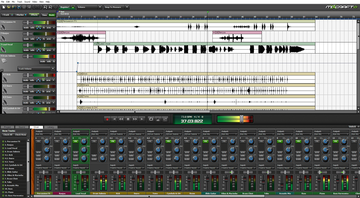
It has been a consistent uphill journey for the fine folks at Acoustica since 1997. Fortunately, the uphill climb has never been for naught; with each new release, they have taken their flagship DAW higher up on the quality scale. Acoustica regularly improves their software with maintenance releases and bug fixes. Up to, and including version 4, Mixcraft wasn’t taken very seriously by most experienced home producers. Most home producers were employing Cubase, Sonar, and other DAWs costing hundreds of dollars apiece.
That all changed with the fifth iteration of Mixcraft, when Acoustica implemented many cool, and much-requested features such as automation and send tracks. Acoustica's motto is Mixcraft's GREATEST feature: "Software Should Be Easy To Use!"
Now in its sixth generation, Acoustica have upped the ante considerably with the ability to add multiple “lanes” on any single channel, improved VST crash isolation, multi-out VST support, improved midi/piano roll editing, multiple bus outputs, and ReWire integration. The standard version is an incredibly affordable option for anyone; from teenage producers to hobbyist retirees. Don’t be fooled though, Mixcraft delivers a lot of “professional bang for the buck” and is much, much more than a beginner’s novelty app.
This standard version of this 32 bit powerhouse from beautiful California, USA, retails for $75 buck-a-roonies. To kick it up a notch, and gain access to the incredibly lush-sounding Acoustica Pro Reverb, IZotope Mastering Essentials suite, overflowing collection of quality virtual instruments and bevy of effects from respected developers such as ToneBoosters and G-Sonique, requires $149 well-spent dollars. Acoustica’s upgrade pricing is the most gracious and fair of any company that I know of. To upgrade from version 5 Standard to Mixcraft 6 standard only costs $20! To upgrade from 5 Pro to Pro Studio 6 costs $60. LVC-Audio ClipShifter 2 Review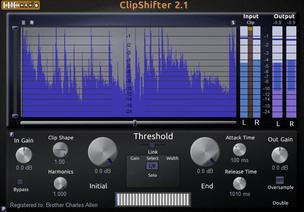
A recent entry into the plug-in swarm of limiters, transient shapers, saturators, and distortion devices, ClipShifter 2 by LVC-Audio is a keen little handy-dandy “Go Go Gadget Clipper”. When I first chatted with developer, Mr. Matt Witimer, about it, I honestly wasn't quite sure what a “ClipShifter” did. To nutshell it for you, this tidy, cross-platform, native plug-in is a wave-shaping unit that functions like a clipping-style limiter. The sonic characteristics of its clipping/distortion are variable; from hard, brickwall-style clipping, to soft, compressed saturation.
Draw in a deep breath. The cost of this clip shifting goodness is not to be considered by the feint-of-heart. Only the most ardent, full-time professional recording engineer would even begin to entertain the notion of applying for a 2nd mortgage in order to furnish his/her studio with this exorbitantly-priced digital weapon. Are you seated and prepared? ClipShifter costs an overwhelming $1176 (USD). Retract that order and stand down! That was a typo. It should read, $11.76 *Grin.
Ok, comrade reader, fall out! Let’s recon LVC’s sassy, satisfying, insatiable, ClipShifter. Blue Cat Audio Liny EQ Pack Review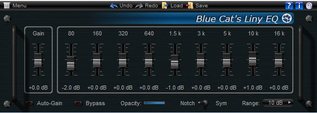
From Paris, France, Blue Cat Audio has positioned itself as one of the world’s finest craftsmen of cross-platform, higher-end DSP software and frequency analysis tools. Not to be mistaken as eclectic, over-priced fodder, Blue Cat’s audio-software is deservedly held in high regard by professional audio engineers and studio owners as that of ‘blue ribbon’ excellence.
With a MSRP of 119€ or $159(USD), this studio-grade EQ solution is not necessarily one that some home producers would consider ‘affordable’ (read: cheap-software). Blue Cat Audio was founded by Guillaume Jeulin in the pursuit of achieving exceptional software quality and reliability. Blue Cat Audio soft-wares are enlisted and deployed by recording studios, universities, recording schools, home studio owners, and recording engineers; as well as professional and amateur musicians from all over the globe.
Having this precedent established, let’s investigate Blue Cat Audio’s LinyEQ Pack to determine if it upholds that bar of excellence. Endless Series 3 Review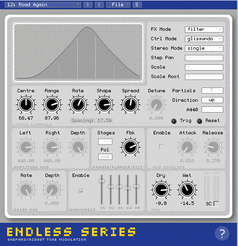
When I first happened upon the intriguing audio psychedelia, which is known as “Endless Series 3”, I was reminded of Warner Brother’s famous cartoon character, ‘Marvin the Martian’ and the sound of his “eludium PU36 explosive space modulator”. Just in case you aren’t familiar with “Marvin the Martian”, I’ve included a YouTube link at the end of this article for your amusement. *wink.
“Oh my, what an interesting digital specimen. I will now attempt to analyze it with my multi-purpose ACME space ray device.”
Endless Series 3 is unique. Difficult as it to categorize, I would label it as a creative filter effect. Its most noteworthy feature, and primary function, is that of the Shepard-Tone generator. (Shepard-tone will be explained shortly.) Endless Series 3 also offers up blue-ribbon modulation effects in the tradition of flanging, ring-modulation, and phasing. ES3 will only require £29.99 GBP ($46 USD) of your earthly, monetary substance.
PSPaudioware PianoVerb 2 Review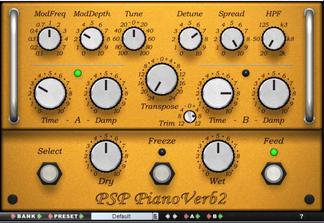
I’ve always really dug reverberation and ambience effects, kids. Even as a teeny bopper, I was always tempted to sing if I was in a (hopefully empty) public restroom, the school gymnasium, an empty community hall, under a highway overpass, and etcetera. If there was a natural ambient space that I could ‘listen’ to, I made noise. I would sing, shout, or clap. I was digging the ‘sound’; ya know? Do you suppose that Eddie Kramer or Mutt Lange ever did the same? I hope so – then I couldn’t be considered a spaz!
One of my absolute favorite types of naturally-occurring ambience is that which happens inside of an old upright-grand piano case. When I was an ankle-biter, I would squirm in behind the old 5ft’ tall, upright grand piano in our living room so I could sing - and make who knows what other awful squawks – ‘into’ the back of the piano. Sometimes I’d stand up on the bench so that I could open the top and yell/sing into it. (some would think I was ‘off-the-noodle’, but I didn’t care . . .)
When I first heard of PSP Audioware’s PianoVerb 2, my attention and interest was immediately all ‘jazzed-up’. AcmeBarGig Head Case Review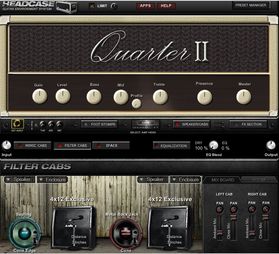
“You're traveling to another dimension, a dimension not only of sight and sound but of aural creativity; a journey into a nebula of wondrous amplifier simulation whose boundaries are that of imagination. Your next stop...the Tone Stack Zone.
Canada’s innovative brainchild, AcmeBarGig, have recently released the highly-anticipated Head Case into the wild. Head Case is the embodied culmination succeeding three years of deep-level programming, intense research & development, and exhaustive beta testing. Head Case is alone in its nebula. It unanimously has dominion of the sphere it occupies. There isn’t another for it to be aptly compared to. How do you spell ‘unique’? H-E-A-D C-A-S-E!
The $60 sign post is just ahead. Cast off your timidity and join me. If you dare.
Xils-Lab Le Masque Delay Review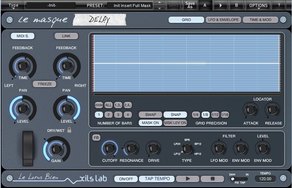
Reviewer’s Log: stardate 19.02.2013 Delivering the quality that one expects from Xils-Lab, and perhaps exceeding those expectations, the recently upgraded Le Masque Delay 1.5 docks itself into your DAW with the grandiose entry of the Starship Enterprise NCC-1701-C. To celebrate the momentous occasion, Xils-Lab are making Le Masque Delay 1.5 available until February 28th, 2013, for only 44€25 ($58). The MSRP will be 59€ ($77) after that stardate. *Wincing at my own flayed attempt to use kool Star-trek-ian terminology.* By Xils-Lab’s admission: “Le Masque Delay inherits the renowned XILS-lab filters and all the experience accumulated from the making of Virtual Analog synthesizers and audio effects. But, Le Masque Delay can also perform like a regular Delay” SKnote C165a Review
If you're a fan of the revered DBX VCA compressor/limiter sound, then the C165a by SKnote is an absolute must-have! As though it were the starring role, featured in a box office opening prelogue, the C165a dramatically impresses us with its with its stylish, visual finesse and sonic supremacy. Higher-priced compression nemeses could be well justified to keep a wary eye on C165a's forward advance into present-day production environments.
|
NO SPAM! IK Multimedia Group Buy
FX Pick & Mix Group Buy - up to 16 for the price of 1
Will You Help?Web hosting is getting more and more expensive all the time, and Reviewer's Revival is NOT funded nor supported by any commercial enterprise or business. A donation of any amount is greatly appreciated. Even $2 or $3 for a coffee - every little bit helps. Thanks very much.
Legal BlurbAll of the articles published on Reviewer's Revival are undertaken to be purely objective, impartial reviews. Reviewer's Revival is not owned, funded-by, nor hired by any company or individual. Reviewer's Revival is the sole property of, and solely under the discretion and direction of Brother Charles. |

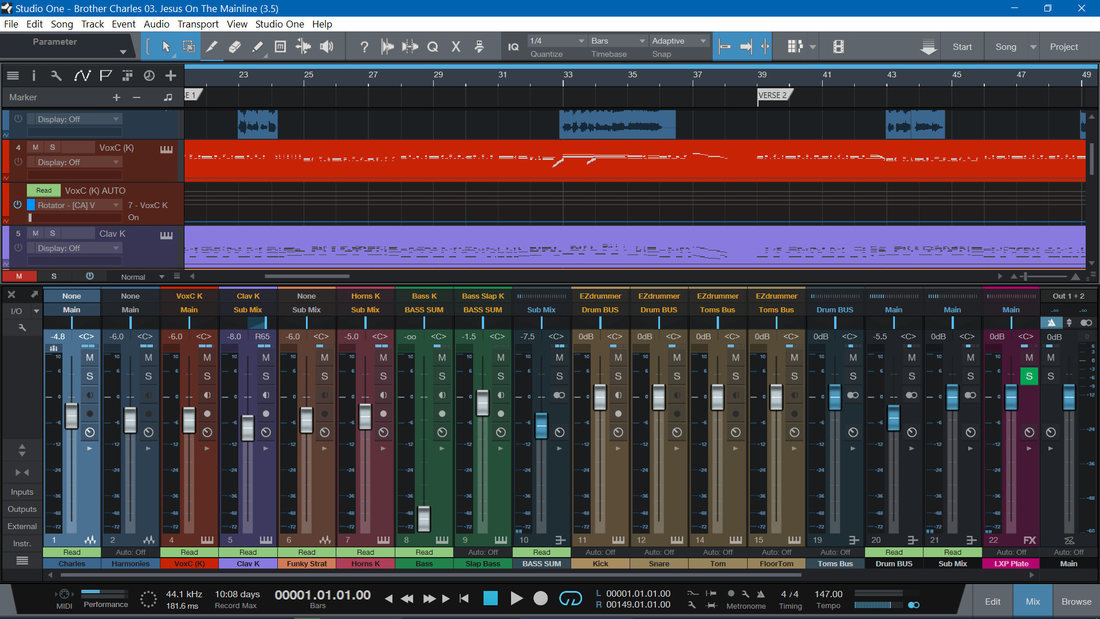

 15% OFF Summer Sale!
15% OFF Summer Sale!
 RSS Feed
RSS Feed

